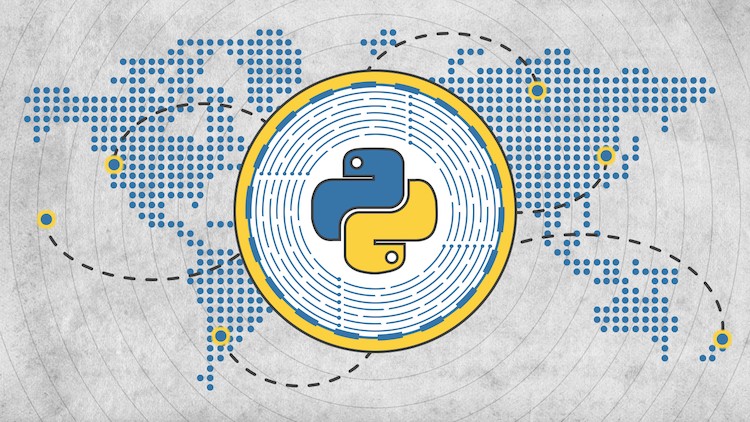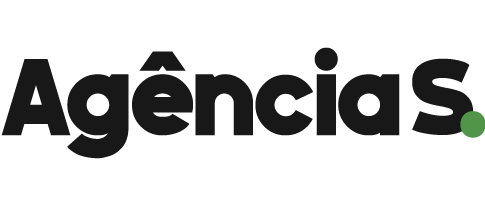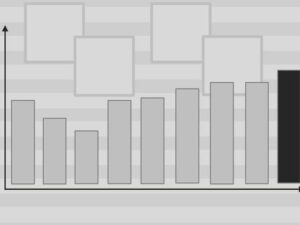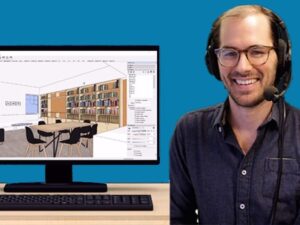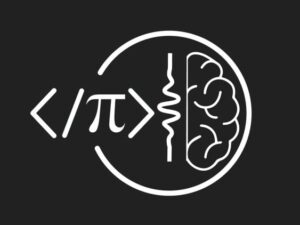Python, JS, & React | Build a Blockchain & Cryptocurrency
- Descrição
- Currículo
- FAQ
- Revisões
Why should you take this course?
Allow me to put on my salesman hat, and respond that the real question is “why shouldn’t you take this course”?
The course includes Python, Blockchains, Cryptocurrencies, Web Development (Backend and Frontend), JavaScript, React JS, React Hooks and more. By investing in this course, you’re really getting your bang for your buck.
Want to add learn software programming, while adding relevant languages/technologies to your portfolio? Well then, this course is perfect for you. According to stackoverflow (2022 developer survey), Python and Javascript are the most popular languages/technologies. React.js is the most loved web framework. And there’s no doubt that blockchains and cryptocurrencies are on the cutting edge of modern technology.
Want to learn Python and/or JavaScript? This course is for all levels. If you’re a newcomer, you’ll get a from-scratch experience. But the course journey is completely in your hands. If you’re more experienced, feel free to skip the introductory sections for Python and JavaScript to get right into building the project.
The course is designed to help you achieve three main goals:
-
Learn Python and Backend Web Development.
-
Build a Blockchain and Cryptocurrency Project that you can add to your portfolio.
-
Learn JavaScript, Frontend Web Development, React.js, and React Hooks.
The course’s main project is to build a blockchain and cryptocurrency. With a blockchain and cryptocurrency system as the main goal, you will go through a course journey that starts with backend development using Python. Then, you will transition to frontend web development with JavaScript, React.js, and React Hooks.
Here’s an overview of the overall course journey:
-
Get an introduction of the Python Fundamentals.
-
Begin building the Blockchain Application with Python.
-
Test the Application using Pytest.
-
Incorporate the crucial concept of Proof of Work into the Blockchain.
-
Enhance the application to prepare for networking.
-
Create the Blockchain network using Flask and Pub/Sub.
-
Integrate the Cryptocurrency, building Wallets, Keys, and Transactions.
-
Extend the network implementation with the cryptocurrency.
-
Transition from Python to JavaScript with a “From Python to JavaScript” introduction.
-
Establish frontend web development skills and begin coding with React.js.
-
Create the frontend portion for the blockchain portion of the system.
-
Complete the frontend by building a UI for the cryptocurrency portion of the system.
In addition, here are the skills that you’ll gain from the course:
-
How to build a blockchain and cryptocurrency system from scratch.
-
The fundamentals of python – data structures, object-oriented programming, modules, and more.
-
The ins and outs of hashing and sha256.
-
Encoding and decoding in utf-8.
-
Testing Python applications with pytest.
-
Python virtual environments.
-
The concept of proof of work, and how it pertains to mining blocks.
-
Conversion between hexadecimal and binary.
-
HTTP APIs and requests.
-
How to create APIs with Python Flask.
-
The publish/subscribe pattern to set up networks.
-
When to apply the concepts of serialization and deserialization.
-
Public/private keypairs and generating data signatures.
-
The fundamentals of JavaScript.
-
Frontend web development and how web applications are constructed.
-
The core concepts of React and React hooks.
-
How the React engine works under the hood, and how React applies hooks.
-
CORS – and how to get over the CORS error properly.
-
How to build a pagination system.
***
Questions you may have:
Can I use the course project for my own software product?
Yes! Feel free to use the course project as the foundation for your own software product/company. The course code is open source. And I’m happy to provide advice via the Q&A section, or direct messages.
Can this course help me find employment?
Taking this course will turn you into both a software engineer, and a specialized blockchain engineer. This position is a new one in the software industry. And the demand is high. But the supply is low. So open a ton of doors by becoming an in-demand engineer with a fully deployed blockchain and cryptocurrency in your portfolio!
What is the difference between this course and your other courses on building a blockchain and cryptocurrency?
This is a remastered version of my other blockchain courses, using Python this time! Since Python is a language that can greatly serve you in your future with software engineering and/or the blockchain, this course is here with Python as a main emphasis.
In addition, a lot of the blockchain logic has been improved, with additional methods and concepts! This version of the project is definitely more secure, more thorough, and more complete.
***
Here are snippets from what students have said about my blockchain and cryptocurrency courses in the past:
“Outstanding course – I have a fully working and tested blockchain thanks to this course! David was super helpful in the Q&A, and did an excellent job of breaking everything down.” – M.R.
“Excellent! The basic blockchain code is introduced early on. Explanations are very clear” – D.A”
“David has done such an amazing job with this course! He is patient and walks you through blockchain concepts from start to finish… A very solid foundation!” – K.I.
***
Ultimately, this course is a learning experience like no other. It’s packed with languages and technologies from Python, to the blockchain, to React.js, and everything in between. On top of that. It’s an opportunity to become a pioneer in such a young and promising field.
So, hopefully, I’ll see you in the course!
-
3Section Preview: Python FundamentalsVídeo Aula
-
4Set up Python and other Software Installations (Mac, Linux, and Windows)Texto
-
5For Windows: Install Windows Subsystem for Linux and VS CodeVídeo Aula
-
6Python Interpreter and FundamentalsVídeo Aula
-
7Strings and VariablesVídeo Aula
-
8FunctionsVídeo Aula
-
9Control Flow: Booleans, Comparison Operators, and If StatementsVídeo Aula
-
10Loops: While and ForVídeo Aula
-
11Data Structures: Lists, Sets, and DictionariesVídeo Aula
-
12Overview: Classes and Object-Oriented ProgrammingVídeo Aula
-
13Code: Classes and Object-Oriented ProgrammingVídeo Aula
-
14Section Summary: Python FundamentalsTexto
-
15Section Preview: Start the Blockchain ApplicationVídeo Aula
-
16The Blockchain and Cryptocurrencies - What, Why, and HowVídeo Aula
-
17The Blockchain and Block classVídeo Aula
-
18Course RepositoryTexto
-
19Modules and __main_Vídeo Aula
-
20Mining Blocks and the Genesis BlockVídeo Aula
-
21Update add_block and Static MethodsVídeo Aula
-
22The Hashing Algorithm Part 1Vídeo Aula
-
23Hashing and SHA-256Vídeo Aula
-
24Encoding and Decoding in UTF-8 | An OverviewVídeo Aula
-
25The Hashing Algorithm Part 2, and Lambda FunctionsVídeo Aula
-
26Section Summary: Start the Blockchain ApplicationTexto
-
33Section Preview: Proof of WorkVídeo Aula
-
34Proof of Work and the 51% AttackVídeo Aula
-
35Difficulty and the Nonce ValueVídeo Aula
-
36Dynamic Difficulty and the Mine RateVídeo Aula
-
37Test Adjust DifficultyVídeo Aula
-
38Proof of Work System | Average Work ScriptVídeo Aula
-
39Hex to Binary ConversionVídeo Aula
-
40Test hex_to_binaryVídeo Aula
-
41Section Summary: Proof of WorkTexto
-
42Section Preview: Preparing the Blockchain for CollaborationVídeo Aula
-
43Chain Validation and Replacement OverviewVídeo Aula
-
44Validate a BlockVídeo Aula
-
45Test is_valid_blockVídeo Aula
-
46Chain ValidationVídeo Aula
-
47Chain ReplacementVídeo Aula
-
48Section Summary: Preparing the Blockchain for CollaborationTexto
-
49Section Preview: The Blockchain NetworkVídeo Aula
-
50APIs, HTTP, and Flask OverviewVídeo Aula
-
51Set Up FlaskVídeo Aula
-
52GET the Blockchain DataVídeo Aula
-
53Respond with the blockchain as JSONVídeo Aula
-
54Mine Block RequestVídeo Aula
-
55Real-Time Messaging Network through Pub/SubVídeo Aula
-
56Set up PubNubVídeo Aula
-
57Make sure to have the proper version of PubNub installedTexto
-
58PubSub ClassVídeo Aula
-
59Peer InstancesVídeo Aula
-
60Broadcast BlocksVídeo Aula
-
61Add Received BlocksVídeo Aula
-
62Avoid Redundant Pub/Sub InteractionsTexto
-
63Synchronize a Peer on StartupVídeo Aula
-
64Section Summary: The Blockchain NetworkTexto
-
65Section Preview: The CryptocurrencyVídeo Aula
-
66Wallets, Keys, and Transactions OverviewVídeo Aula
-
67Wallets and Cryptography ModuleVídeo Aula
-
68Sign DataVídeo Aula
-
69Verify SignaturesVídeo Aula
-
70Test the WalletVídeo Aula
-
71TransactionsVídeo Aula
-
72Test TransactionsVídeo Aula
-
73Transaction UpdatesVídeo Aula
-
74Note: Updating local transactions with the Redundant PubSub FixTexto
-
75Test Transaction UpdatesVídeo Aula
-
76Validate TransactionsVídeo Aula
-
77Section Summary: The CryptocurrencyTexto
-
78Section Preview: Transactions on the NetworkVídeo Aula
-
79Download PostmanTexto
-
80Transact EndpointVídeo Aula
-
81Serialize the Wallet Public KeyVídeo Aula
-
82Encode the Signature and a Successful POST TransactVídeo Aula
-
83Transaction Pool: OverviewVídeo Aula
-
84Transaction Pool: CodeVídeo Aula
-
85Broadcast TransactionsVídeo Aula
-
86Transaction Updates in the API and Truthy/Falsy valuesVídeo Aula
-
87Section Summary: Transactions on the NetworkTexto
